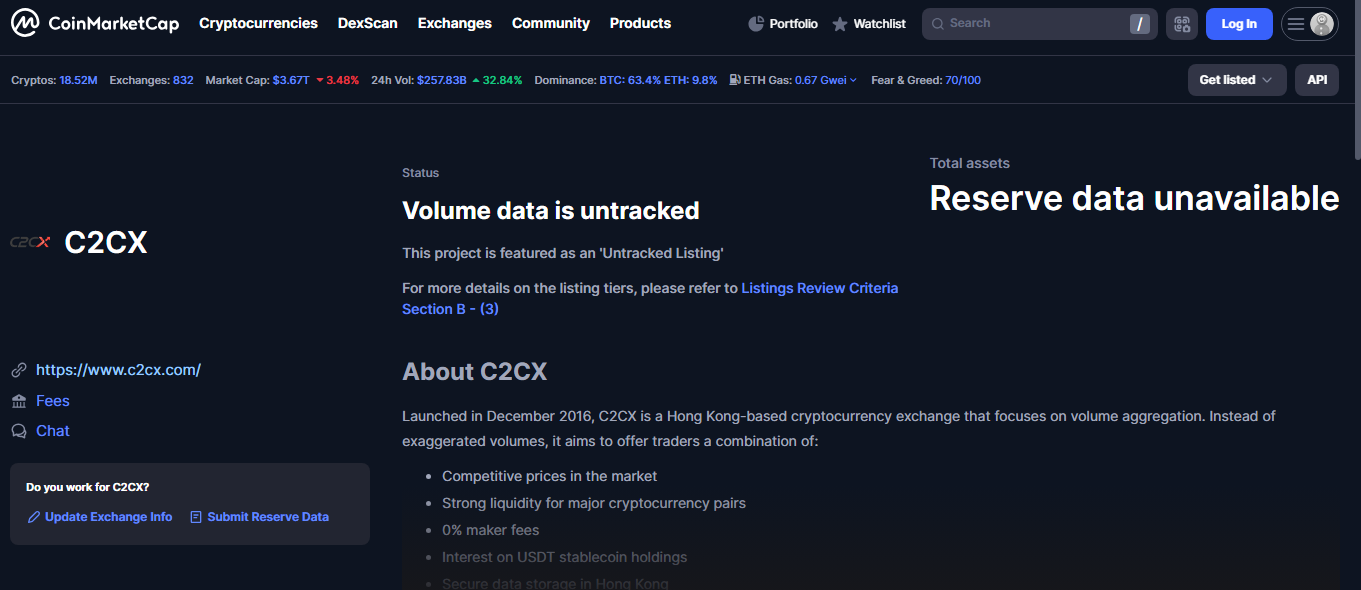C2CX Exchange - Bare Bones Trading That Lost Its Pulse

C2CX, short for Crypto-Crypto Exchange, popped up around 2016 with operations linked to Beijing Bit Quantum Information Technology. The pitch was pretty simple: give local users a platform to trade Bitcoin and Ethereum directly against Chinese yuan, along with a few extra digital asset pairs. While it maintained a modest user base early on, over the years it lost traction and now stands largely dormant.
Original strengths that drew traders
Early on, C2CX was one of the few places in China you could reliably trade crypto for CNY. Its highlights were straightforward:
- Basic spot markets for BTC and ETH against CNY and Tether
- Multi-signature wallet security meant your assets were spread across multiple private keys, making theft harder
- Fee model was flat and predictable with a simple 0.2 percent per trade, no maker-taker complexity
- Simple interface that appealed to beginners who didn’t need advanced charts or margin tools
For small retail traders just looking to buy or sell Bitcoin with yuan, it did the job without much fuss.
How problems stacked up
Despite the clean start, C2CX ran into several issues:
- Liquidity dried up over time. As bigger exchanges emerged or added direct yuan pairs, most serious volume shifted away.
- No serious development. While competitors rolled out staking, futures and better UI, C2CX stuck to a basic playbook and stopped evolving.
- Regulatory climate tightened in China. That made it harder for exchanges with local ties to keep smooth fiat onramps, which undercut one of its only unique draws.
- Support quality fell. Traders reported slow or non-existent responses, especially around withdrawal delays or account verifications.
Eventually, the platform became so quiet that many aggregator sites list it as inactive or without meaningful daily volume.
What you’ll find if you visit now
C2CX still has a working site, but markets are largely frozen or show almost no activity. You might be able to register, but placing trades with any real counterparties would be next to impossible. Support channels appear hollow, and KYC processes are inconsistent.
Their old marketing about multi-sig security and robust anti-theft systems remains on pages, but without active operations or updated tech, it rings hollow. There’s also no evidence of ongoing audits or external compliance checks.
Should anyone still try it?
Practically speaking, no. There’s no reason to move capital onto C2CX in 2025. The market depth isn’t there, the risk of getting stuck is high, and other exchanges (even non-mainland ones that serve Chinese users) now offer vastly superior liquidity, features and support.
The only minor case might be out of curiosity or historical research into how early regional exchanges worked. But that’s more crypto archeology than practical trading.
Bottom line
C2CX was once a small, straightforward bridge between yuan and crypto that served a purpose when options were scarce. As the global and even local crypto landscape matured, it simply didn’t keep up. Now it stands as more of a relic - functional enough to load in a browser, but far from a safe or efficient trading venue.
Best for you if you’re just exploring old exchange sites or need an example for research. Avoid it if you actually want to buy, sell or move crypto - there are dozens of modern platforms with better everything.
In short, C2CX is a ghost platform from crypto’s middle years. Look elsewhere for serious trading.
Disclaimer
“This content is for informational purposes only and does not constitute financial advice. Please do your own research before investing.”
.png)







%203.svg)
%203.svg)




















